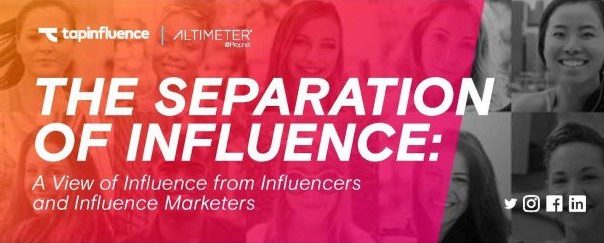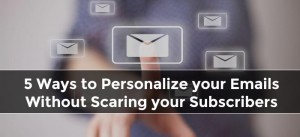
Image courtesy of TapInfluence
The art of persuasion is [according to Psychology Today]:
How do you get people to think and behave a little differently? Persuasion is an art—If you push too hard, you will risk being aggressive. If you nudge too lightly, you may turn into a pest. A thoughtful, persuasive argument can lead you to getting what you want.
In many ways, influence and persuasion are different heads of the same coin and often work best when they work together.
According to some research I’ve done, influence is the ability to get people to work towards a goal, while persuasion is a communication tool that presents information in a way that leads them to certain behaviors. But, most sites I visited seemed to view them as virtually the same thing.
The art of persuasion
Persuasion requires a brand make arguments framed in a manner that generates change — whether that change is buying a product, a social good, such as using seat belts, or changing your attitudes toward a brand.
Here’s a good example of the art of persuasion: [source]
The wind and the sun decided to have a competition to decide once and for all who was stronger. They agreed that the winner would be the one who could persuade a man to take off his coat. The wind blew and blew, but the man only held on more tightly to his coat. Then the sun shone gently down, and within minutes, the man took off his coat.
The moral here is that you can’t force someone to do what they don’t want; instead, the art of persuasion is to get them to want what you want.
A recent study by TapInfluence [available as a free ebook from this source], shows the ROI of influence comes from building authentic relationships with potential customers and the ability of influencers to amplify the brand’s messages across bigger and wider audiences. And, in the following graphic, we learn how influencers manage this, mainly through what Cialdini calls Liking, with a little Authority thrown in for good measure.

Tools to manage the art of persuasion
Many influencers have an innate ability to drive change.
For instance, celebrities (including micro celebrities) have huge followings and people love them. That gives them tremendous power to influence behavior. If they Tweet about a new clothing brand or take a Selfie at a trending new restaurant, it can mean instant success for the company (or destroy the company in cases like the hotel where Kim Kardashian was robbed).
As mentioned earlier, this relies on “Liking” the celeb.
This tool of influence was used successfully in the era of traditional media by hiring celebrities for your commercials.
But, what do brands that can’t afford to hire big name celebrities do?
Well, there are a host of other tools of influence out their to help persuade potential customers to give your brand a try. So, let’s talk about some of them.
Cialdini’s weapons of influence
Cialdini introduced his 6 tool of influence (he’s recently added a 7th in his new book, Pre-suasion, unity) over 30 years ago, drawing on research in social psychology, in which he holds a PhD.
Marketing is much more than just putting pretty pictures and words on paper — it’s know which words and pictures will motivate your target audience to action. For this, marketers have all these influence tools available, but often fail to use them — personally, I’m convinced part of the problem is that too many brands hire folks to do marketing from outside marketing, but that’s a discussion for another day.
Briefly, here are the 7 tools of influence:
- Liking
- Scarcity
- Social Proof
- Authority
- Unity
- Reciprocity
- Consistency
But, there’s more to generating persuasive materials than simply using the tools of influence. First, and foremost, you need to have a deep understanding of your customer — who are they, what are they like, what are their biggest pain points …
Other tools used in the art of persuasion
- Norms — we tend to behave in ways that fit our normative values. If you align your pitch with these values, you’ll have more success. For instance, norms of sustainability help influence consumers to buy your brand when you suggest it creates less waste or is compostable.
- Attention — you’ll never get a chance to persuade potential consumers unless you get their attention. Using humor or fear appeals works particularly well in grabbing attention, especially when the images reinforce this.
- Repetition pays off, but over repetition fails. Finding the perfect balance between repeating your message enough (usually something on the order of 5 times) and repeating your message so much you annoy your market (we call this advertising burn-out) is challenging.
- Urgency — often, we’re successful in our efforts to persuade a consumer to buy our brand, but there’s no sense of urgency. Without this, they may forget their intention to buy (in fact there’s only about a 30% correlation between intentions and actual purchase behavior).
- Avoid conflict — few are persuaded when you engage in conflict. Hence, if consumers reflect negatively on your brand, lashing out is the worst solution. Instead, thank them for their feedback and show how you will use the feedback to improve your brand. Deleting negative comments can backfire.
Putting it all together
Obviously, employing the art of persuasion requires an understanding of the tools, as well as an ability to bring them together in various types of communication — both mass communication (online and traditional advertising) and in one-on-one communication, which is becoming more common in digital marketing settings.
Using persuasive tactics requires you understand your target audience, not just their demographics, but psychographics such as norms, values, lifestyle, self-identity, and much more.
This is where influencers become important because they often have a ready-made audience that shares many of these psychographic characteristics — often because they’ve self-selected to become part of a group. Thus, a consumer who follows a blog or Twitter for a reality TV personality often shares some commonality with that personality — something that fits Cialdini’s last tool of influence — unity. Meanwhile, consumers who follow a celebrity who performs opera or Shakespeare is likely very different from the one following the reality TV personality.
Misty Copeland, the first African-American dancer to become a principle with a major company attracts a particular audience, for instance. Hence, recent advertising using her to tout yogurt helps sell a particular audience that identifies with her.
Also, recognize that consumers often have multiple identities, not in a psychotic sense, it’s just that we may be slightly different people in different contexts — for instance, you’re likely a little different at work than out with your friends. For persuasion to work effectively, you need to activate the appropriate self-identity by manipulating the context of the ad and maybe other elements to ensure the consumer views the ad with the right identity.
Business & Finance Articles on Business 2 Community
(66)
Report Post




